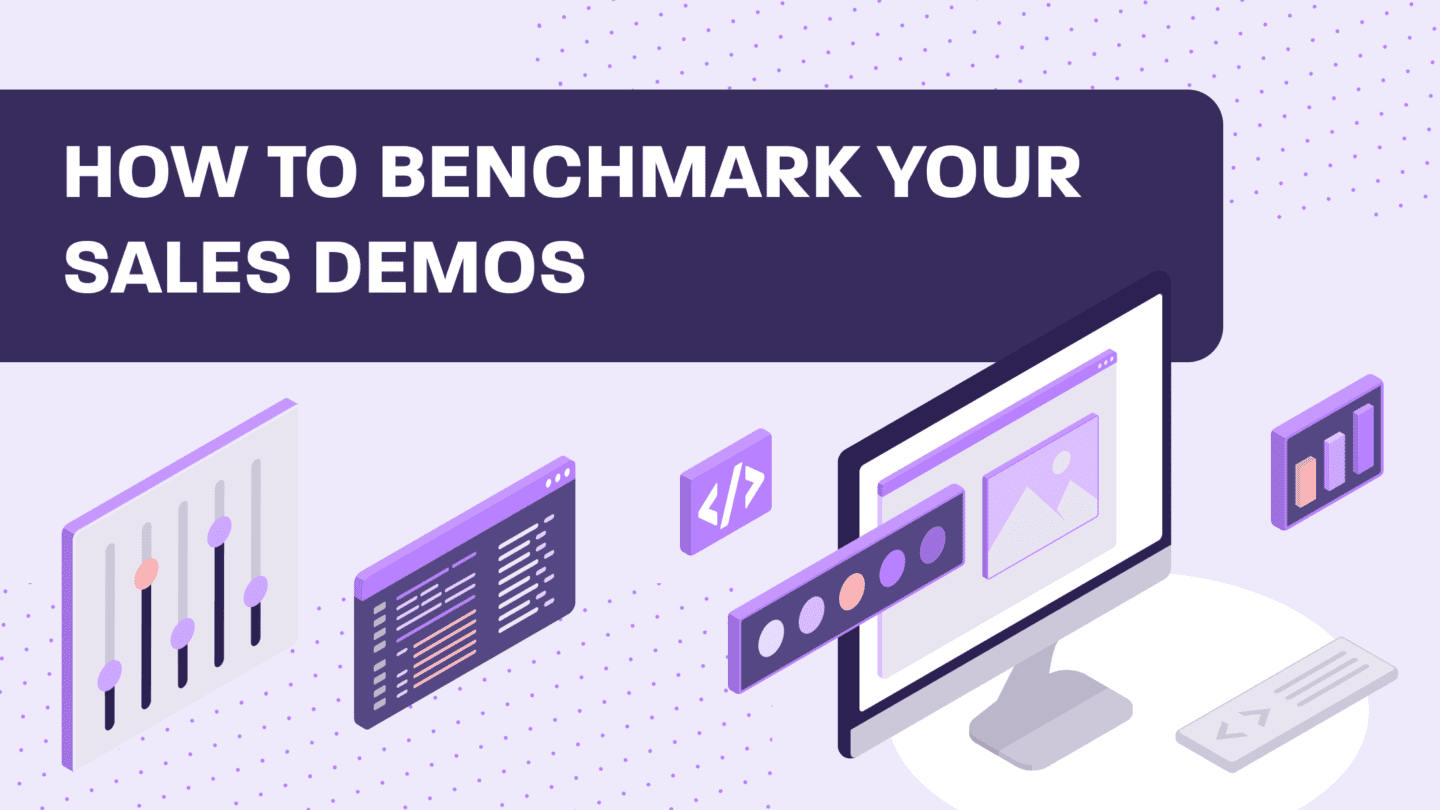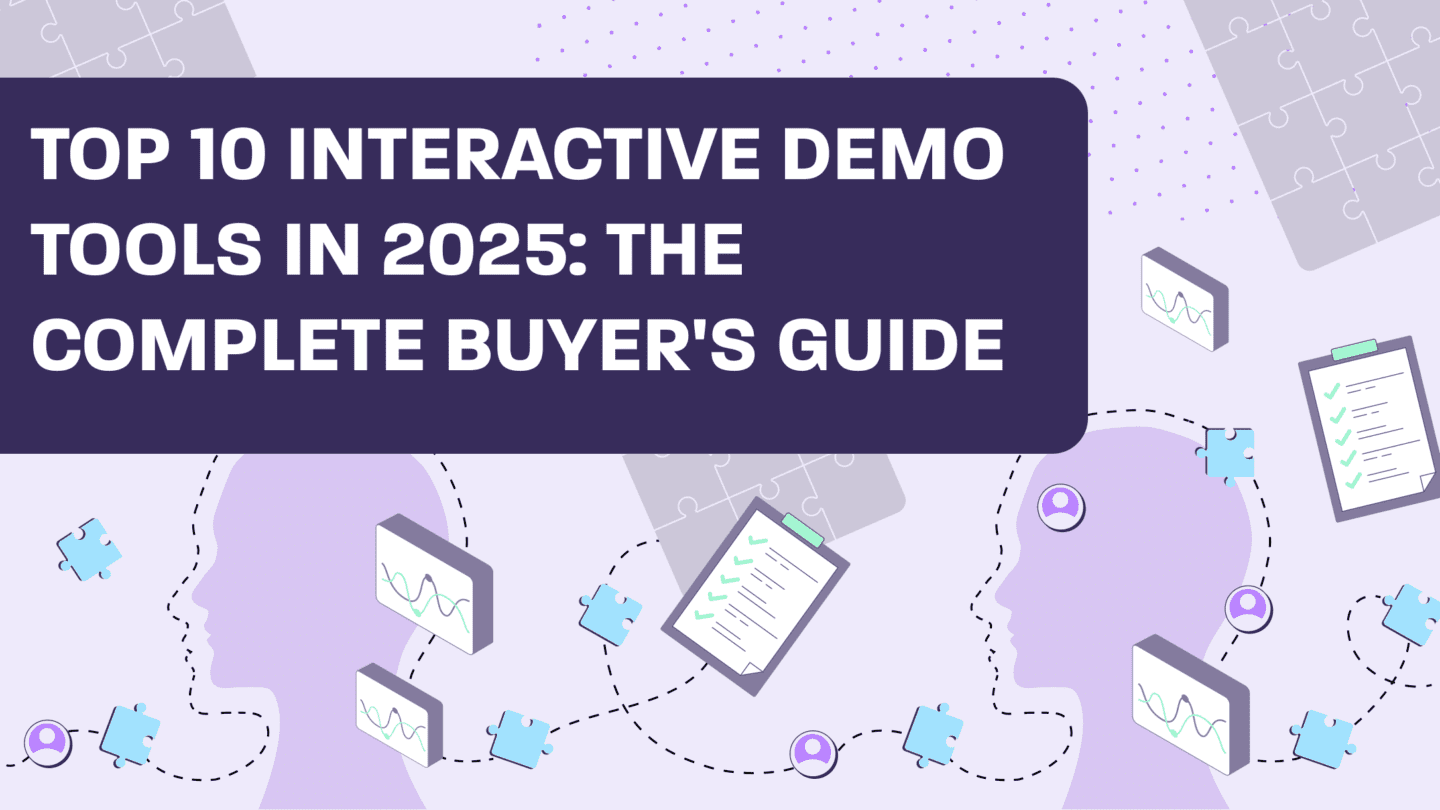Demo ROI (Return on Investment) measures the business value generated from interactive product demos. Unlike traditional metrics that focus solely on views or completions, modern demo ROI encompasses engagement quality, pipeline attribution, and revenue outcomes tied directly to demo interactions.
This guide explains how B2B SaaS companies measure, track, and optimize demo ROI using engagement analytics, CRM integration, and behavioral data.
What Metrics Should You Track for Demo ROI?
Primary Engagement Metrics
- Session Volume
- Definition: Total number of demo sessions including repeat visits
- Benchmark: Track month-over-month growth as adoption indicator
- Use case: Measures top-of-funnel reach and content distribution effectiveness
2. Unique Viewers
- Definition: Individual people who interacted with demos in a given period
- Benchmark: Compare to lead volume for engagement rate calculation
- Use case: Shows audience breadth and penetration within target accounts
3. Time Spent
- Definition: Total viewing duration across all sessions
- Benchmark: Median time spent provides outlier-resistant attention signal
- Use case: Proxy for buyer curiosity and content depth
4. Completion Rate
- Definition: Percentage of demo screens or guide steps viewed per session
- Benchmark: 60%+ completion indicates strong content-market fit
- Use case: Measures narrative strength and engagement quality
5. Bounce Rate
- Definition: Percentage of sessions that exit after first screen with no interaction
- Benchmark: <30% bounce rate signals effective hooks and gating strategy
- Use case: Identifies early friction points in demo experience
6. FAB Conversion Rate
- Definition: Percentage of sessions with at least one Floating Action Button click
- Benchmark: 15-25% conversion indicates strong call-to-action effectiveness
- Use case: Direct measure of intent to take next step (book meeting, request trial)
7. Engagement Score
- Definition: Composite 1-10 score benchmarking demo performance vs. top performers
- Benchmark: 7+ indicates high-quality engagement
- Use case: North-star KPI for continuous optimization
How Do You Measure Demo Attribution to Pipeline?
Pipeline Impact Metrics
Identified vs. Anonymous Session Ratio
- Target: 70-80% identification coverage
- Method: Email parameters, lead forms, company-level recognition (e.g., Walnut Uncover)
- Impact: Foundation for accurate revenue attribution
Win/Loss Rate by Demo Activity
- Calculation: Compare close rates for opportunities with demo engagement vs. without
- Typical lift: 2x higher close rates with demo activity
- Use case: Quantifies demo impact on deal success
Average Sales Cycle Length by Demo Activity
- Calculation: Compare days-to-close for deals with demo views vs. without
- Typical impact: 25-35% reduction in sales cycle length
- Use case: Proves velocity acceleration from interactive content
Stage Conversion Rate – With Demo Views
- Calculation: Percentage of leads/opportunities advancing to next stage after demo interaction
- Benchmark: 36% of demo viewers become qualified opportunities
- Use case: Tracks how engagement influences progression
Stage Conversion Rate – Without Demo Views
- Purpose: Establishes baseline for leads without demo engagement
- Comparison: “With vs. without” comparison shows true lift
- Use case: Isolates demo-specific impact on conversion
Multi-Stakeholder Engagement Rate
Use case: Identifies buying committee penetration
Definition: Percentage of deals with 3+ unique viewers from same account
Impact: 33% faster close rates for multi-stakeholder deals
What’s the Difference Between Guided and Non-Guided Demo Analytics?
Guided Demo Metrics
Guided demos use annotations, modals, and structured narratives to walk viewers through product stories.
Key metrics:
- Guide Completion Rate: Percentage reaching final annotation chapter
- Guide Steps Viewed: Specific drop-off points within narrative flow
- Annotation Click-Through: Progression between story beats
- Modal Timing: Average time spent per modal or annotation
Optimization focus:
- Guide branching for different personas
- Narrative pacing and chapter length
- Annotation copy clarity and CTAs
- Modal timing and transition smoothness
Non-Guided Demo Metrics
Non-guided demos allow free exploration without prescribed paths.
Key metrics:
- Screens Viewed: Percentage of available screens visited
- Navigation Patterns: Most common viewer paths
- Screen-Level Time Spent: Attention by feature or section
- Repeat Screen Visits: Indicators of high interest areas
Optimization focus:
- Screen sequencing and information architecture
- CTA placement and visibility
- Navigation friction reduction
- Content depth vs. breadth balance
How Do You Improve Demo ROI?
Optimization Framework
1. Improve Identification Coverage
- Implement email parameters in campaigns
- Add strategic lead forms after value delivery
- Use company-level recognition tools
- Integrate CRM for automatic session sync
2. Optimize Content Performance
- Review Screens Funnel and Guides Funnel monthly
- Reduce bounce rate through stronger openers
- Increase completion through tighter pacing
- A/B test CTA placement and messaging
3. Enhance Attribution
- Connect demo platform to CRM and marketing automation
- Track multi-touch engagement across buyer journey
- Segment by persona, industry, deal size
- Build custom reports for pipeline correlation
4. Scale Internal Adoption
- Identify power users and template best practices
- Track group-level analytics for team benchmarking
- Provide enablement for low-adoption teams
- Celebrate high-performing demo creators
5. Execute Recovery Plays
- Enable champions with leave-behind assets
- Flag opportunities with low engagement
- Re-engage with targeted playlists or guided demos
- Trigger nurture sequences based on engagement drops
What Are the Most Common Demo ROI Mistakes?
Pitfalls to Avoid
1. Tracking Only Vanity Metrics
- Problem: Focusing on views and impressions without quality signals
- Solution: Prioritize completion rate, time spent, and FAB conversion
2. Low Identification Coverage
- Problem: <50% of sessions tied to known contacts
- Solution: Implement multi-layered identification strategy (forms, parameters, Uncover)
3. No CRM Integration
- Problem: Cannot tie engagement to pipeline outcomes
- Solution: Connect demo platform early in GTM stack implementation
4. Ignoring Internal Adoption
- Problem: Low team usage undermines external results
- Solution: Track user and group analytics, celebrate power users
5. Static Content
- Problem: Creating demos once and never optimizing
- Solution: Build monthly review rhythm using funnels and engagement scores
6. Missing Multi-Stakeholder Signals
- Problem: Only tracking champion engagement
- Solution: Monitor unique viewers per account, flag buying committee growth
Frequently Asked Questions
Q: What is a good demo completion rate? A: Completion rates vary by industry and demo type. Use your historical data as a baseline and track improvement over time. Guided demos typically show higher completion than non-guided exploration demos.
Q: How many demo sessions indicate serious buyer intent? A: Multiple sessions from the same account within a short timeframe typically correlate with qualification readiness. Multiple unique viewers signals buying committee engagement.
Q: Should all demos be gated? A: No. Use ungated demos for discovery and awareness, introduce gates after viewers experience 3-5 steps of value. Target 70-80% identification across your full demo ecosystem.
Q: How do you attribute revenue to demos in multi-touch journeys? A: Use time-decay or position-based attribution models. Track first-touch (awareness), multi-touch (consideration), and last-touch (decision) demo engagement separately.
Q: What’s more important: session volume or engagement quality? A: Quality. High-completion sessions with strong FAB conversion outperform high-volume, low-engagement activity.
Q: How long should a demo be? A: Demo length varies by use case. Non-guided demos for comprehensive product tours typically include 15-25 screens. Guided demos for focused narratives work best with 5-8 annotations. Track median time spent to understand attention patterns.
Q: When should you use guided vs. non-guided demos? A: Guided for structured sales presentations and onboarding. Non-guided for self-service exploration and leave-behinds. Hybrid for versatility.
Conclusion
Demo ROI transforms from an abstract concept to a measurable outcome when you:
- Track engagement quality, not just volume
- Connect demo data to CRM and pipeline outcomes
- Achieve 70-80% identification coverage
- Optimize content monthly based on funnel analysis
- Measure win rates, cycle length, and conversion lift
The companies seeing 27% increases in deal size and 18-point improvements in win rate share one trait: they treat demos as strategic revenue intelligence, not just sales collateral.
Start by auditing your current metrics, implementing identification methods, and building your first attribution report. Demo ROI becomes visible when you measure what matters.
Ready to turn demo engagement into pipeline intelligence?
Start tracking the metrics that matter with Walnut Insights.





